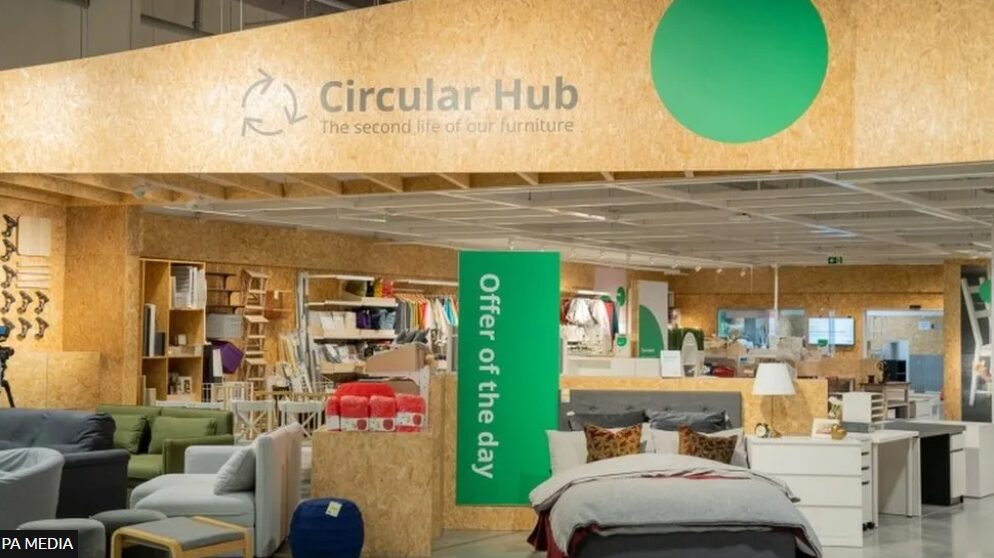In the realm of contemporary design, the concept of sustainable interiors often takes a back seat to the broader architectural narrative. However, as we collectively steer towards a more eco-friendly future, the significance of sustainable interior design is gaining prominence. It is in this context that we delve into the principles and practices that contribute to crafting interiors that not only minimize environmental impact but also enhance the well-being of occupants.
Natural Materials for a Healthier Living
At the heart of sustainable interior design lies a commitment to using materials that are not only environmentally friendly but also contribute positively to indoor air quality. Natural clay plasters emerge as a prime example, offering a renewable resource that minimizes environmental impact. In addition to their eco-friendly nature, clay plasters regulate indoor humidity and air quality, fostering a healthier living environment.

Clay plasters are gaining increasing popularity due to their ecological nature, being made from renewable and biodegradable materials, contributing to a reduced environmental impact. The ability of clay plasters to regulate humidity makes them particularly attractive, creating healthy and comfortable living conditions by absorbing and releasing moisture depending on the surrounding air humidity levels. Clay plasters are also known for their excellent thermal insulation properties, resulting in energy savings by maintaining a stable temperature inside spaces and reducing heating or cooling costs. They are health-friendly as they do not contain harmful chemicals or toxins, which is crucial for individuals with allergies or asthma.
Choosing eco-friendly paints with low volatile organic compound (VOC) content further exemplifies a commitment to occupant health. By steering clear of high VOC materials, which can adversely affect indoor air quality, designers create spaces that are not only aesthetically pleasing but also conducive to well-being.
Circular Economy: Infusing Character and Sustainability
An innovative approach to sustainable interior design involves embracing the principles of the circular economy. In this model, second-hand furniture and decorations take center stage, contributing to environmental conservation and injecting spaces with character. The benefits of this approach include waste reduction, uniqueness, and affordability.
Opting for pre-owned items breathes new life into furniture, preventing it from ending up in landfills. The distinct charm and history of second-hand furniture add character to spaces, fostering a cohesive and intriguing design. Furthermore, repurposing items, such as surfboards and paddles, as interior decorations not only reduces waste but also lends a distinctive atmosphere to the interiors.

A notable exemplar of sustainable practices is Ikea. Their recent “Buy Back” program encourages customers to sell their gently used furniture back to the store. This initiative not only incentivizes sustainable choices but also significantly contributes to reducing waste in the furniture industry.
Beyond individual efforts, the second-hand furniture market, including flea markets, garage sales, and online marketplaces, provides a rich source of sustainable design options. This market not only offers budget-friendly choices but also contributes significantly to reducing the environmental impact of the furniture industry.
>>Biophilic Connection: Harnessing the Power of Plants
The integration of indoor plants emerges as a multifaceted strategy in sustainable interior design. Beyond their aesthetic appeal, indoor plants play a pivotal role in purifying the air and improving indoor air quality. Studies suggest that the presence of plants can alleviate stress, boost productivity, and enhance concentration.
Strategically incorporating plants into interior design not only adds a natural touch but also creates a visually captivating and welcoming environment. The array of colors, textures, and depth introduced by plants transforms spaces, making them more engaging and inviting. Furthermore, indoor plants contribute to a healthier living environment by regulating humidity levels and removing toxins from the air, fostering overall well-being.
Illuminating Sustainability: The Role of Lighting
In the pursuit of sustainable interior design, the emphasis on lighting cannot be understated. A judicious blend of natural and artificial lighting not only enhances the visual appeal of a space but also contributes to energy efficiency.
Selecting energy-efficient lighting and appliances minimizes energy consumption, reducing utility bills and environmental impact. The strategic placement of windows for natural lighting, even in areas lacking external windows, diminishes the reliance on artificial light during the day, aligning with sustainable design principles.
In conclusion, sustainable interior design goes beyond aesthetic considerations. It embodies a commitment to creating spaces that prioritize the health of occupants and minimize environmental impact. By embracing natural materials, incorporating circular economy principles, optimizing lighting strategies, and harnessing the power of plants, designers can contribute to a more sustainable and harmonious living environment for all.
If you’re captivated by this topic, harbor a passion for ecology, and aspire to design interiors aligned with sustainable development principles, we invite you to delve deeper into our expertise.



